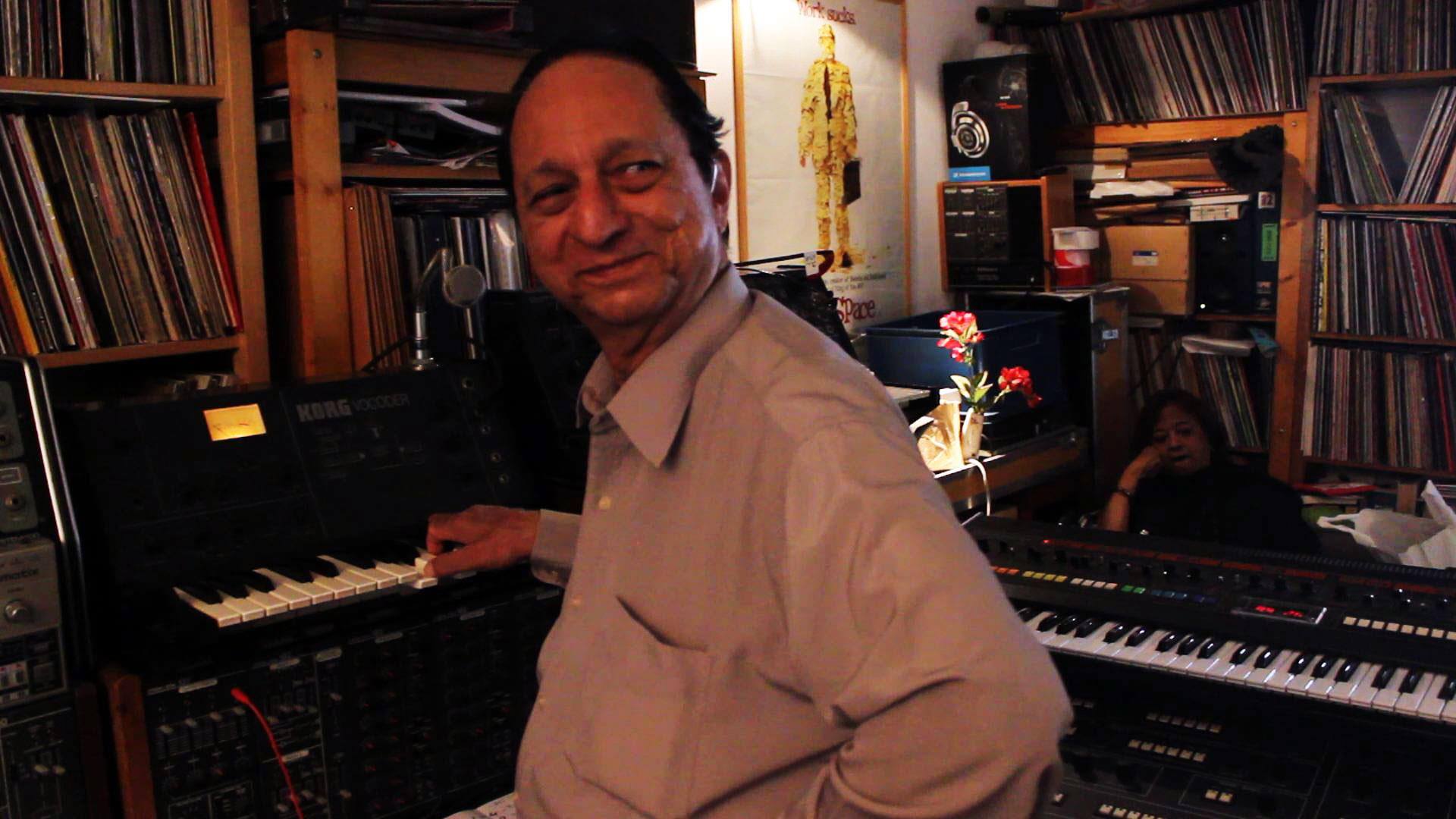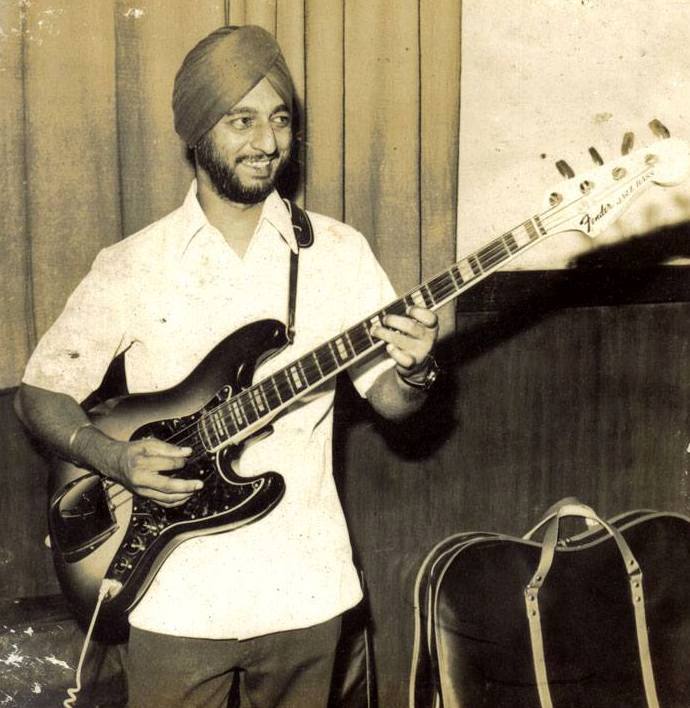How many of you have heard of Charanjit Singh, the multi-instrumentalist session musician coveted by legendary Hindi film music composers like RD Burman, Laxmikant-Pyarelal and Naushad?
Did you know he also unwittingly pioneered a genre of music — acid house — which is responsible for a lot of the popular contemporary music you hear around the world today?
Despite some recent scholarship around his contributions, very few Indians know of Charanjit Singh’s work and the incredible influence he had on modern music.
There is little doubt that he ranks among the most influential figures in the history of contemporary music that you haven’t heard about yet. From playing the distinctive drone of the transicord (an electric accordion) on the opening to ‘Dum Maro Dum’ (1971 film ‘Hare Rama Hare Krishna’) to the the keyboard solo at the beginning of ‘Meri Umar Ke Naujawano’ (1980 film ‘Karz’), his signature is apparent on some of Hindi film music’s most memorable records.
Going further, Charanjit enlightened RD Burman on the importance of the bass guitar, which would not only have an indelible influence on his music, but also the future of modern Hindi film music. Burman reportedly once said of Charanjit, “You remove the bass track from my songs, they will fall flat. He has taught me that the bass can be used as a solo instrument.”
What’s even more extraordinary, however, is how his once-obscure 1982 album ‘Synthesizing: Ten Ragas to a Disco Beat’, which was rediscovered by a Dutch DJ and record collector in 2010 in a Delhi store, has been earmarked by music historians as the start of acid house.
Earlier, historians considered Chicago to be the birthplace of acid house — a subgenre of house music whose “influence can be heard in later styles of dance music” like trance, jungle, techno and trip hop.
Decades later, however, they discovered that it was Mumbai all along.
Charanjit played in Bollywood orchestras, toured with the likes of Kishore Kumar, and performed at weddings through the 1960s to the 1980s.
The rediscovery of his music, however, saw him tour Europe and the United States with popular DJs and play to young, vibrant and often tattooed electronic music fans less than half his age at festivals like the inaugural 2013 edition of Magnetic Fields in Rajasthan in his 70s.
Tragically, he passed away barely two years later on 4 July 2015 at his home in Bandra, Mumbai, at the age of 75, but not before leaving his imprint in the world of music like few have.

Genius multi-instrumentalist
Born in 1940, Charanjit grew up amidst modest circumstances in Mumbai’s Matunga area.
What’s particularly interesting about his background is that he came from a family of instrument makers. His family ran the famous Singh Musical Instruments founded in 1920, whose harmoniums have found a place at the Philharmonie de Paris’ museum of music.
An introverted man by nature, his life was marked by a deep devotion to music. He learnt and mastered a variety of instruments starting with the mandolin and Hawaiian steel guitar, and moving on to others like the bass guitar, clavioline (electronic keyboard responsible for the famous ‘Nagin’ tune), the transicord, and finally, the synthesiser itself.
From the 1960s through to the following two decades, he was a regular fixture in the orchestras of Hindi film music composers like RD Burman and Laxmikant-Pyraelal, among others.
According to the Mumbai Mirror, Charanjit was “the Hindi film industry’s ‘go-to-guy’ when one needed to procure musical instruments.” The report goes on to add, “When RD Burman required a transicord, an electric accordion, for the recording of ‘Dum Maaro Dum’, it was Charanjit who sourced one.”
In fact, his family’s background in sourcing and manufacturing musical instruments played a key role in his career. At great expense, he would buy the latest instruments abroad that no one in India could access.
Even his seminal 1982 album ‘Ten Ragas to a Disco Beat’ came as a result of a trip to Singapore, where he bought a set of newly-launched Roland keyboard, drum machine and a bass synthesiser. It was probably his desire to experiment with the latest music technology and global musical trends that differentiated him from most of his peers.
But it’s also important to note that he was classically trained, and spent enormous amounts of time with supremely gifted artists like Manna Dey, Kishore and Mukesh Kumar.
In fact, Charanjit was introduced to his wife Suparna, a classical dancer studying at Shantiniketan, by Kishore Kumar. They would later marry in 1978. While he was not in the studio, he was touring with Kishore Kumar’s troupe or his own Charanjit Singh Orchestra, which performed at weddings, enacting some of the biggest Hindi film music hits of the day.
Such was his calibre that his son and renowned music composer Raju Singh noted in a 2015 HuffPost article that “…the likes of Burman and Laxmikant-Pyarelal were known to cancel or push sessions to accommodate Charanjit’s availability.”
Also, the same article notes that he was “apparently the only musician who had the privilege of being allowed a glass of whiskey before recording a take — such was the confidence in his ability.”

‘Ten Ragas to a Disco Beat’
By the early 1980s, disco music had caught the attention of the world. Moreover, during this time, there was a surge of Indian musicians who had already begun adopting ragas from traditional Hindustani classical music to western instruments. Influenced by this practice as well as mega hits like Bappi Lahiri’s ‘Disco Dancer’, he, too, wanted to bring together disco and Indian classical music.
In 1982, across the span of just two days, he recorded all the tracks (in single takes) for his album ‘Ten Ragas To A Disco Beat’ at the HMV studio in Cuffe Parade, Mumbai.
In an interview with Shreya Vaidya (published in 2018 by Homegrown), Charanjit said, “That time I was mainly working in films. And a lot of times, music directors used to record songs in disco themes. Like the ‘Disco Dancer’ by Bappi Lahiri. You know?”
He went on to add, “I wanted to do something different from different songs; ragas, so to speak. I decided to add a disco beat to the ragas, which remained consistent through all, but the ragas were all different.”
In a 2011 interview with The Guardian, he also said, “I got an idea to play all the Indian ragas and give the beat a disco beat — and turn off the tabla. And I did it. And it turned out good.”
Describing some of the final intracices in the album, he told Shreya, “The baseline is very important. [Sings] Na din din dha. I would improvise with the ragas in different ways, but not mix any other note in the raga. Although, in a live show I would give vocals with the raga. The main thing is the disco beat is common but the songs keep changing.”
Suffice to say, the record was a commercial failure. On the odd occasion, one would have heard it on the All India Radio station, but according to Charanjit, “It didn’t click”. A possible explanation for this could be that it was an album so ahead of its time.
In the following months, however, Charanjit and his wife Suparna toured different parts of the world, including the United States and Pakistan, where they would perform their ghazals.
Things took a turn in 2002, when Dutch DJ and record collector Edo Bouman encountered the album during a visit to a shop in Delhi.
Speaking to The Guardian, Bouman said, “Back at my hotel, I played it on my portable player, and I was blown away. It sounded like acid house [music], or like an ultra-minimal Kraftwerk [a German band of innovators and pioneers of electronic music].” When Bouman looked back at the date of its release, however, he was in for a shock.
Upon seeing that it came out in 1982, he realised that this album was made five years before what many Western music historians considered at the time as the first acid house record in the world by the American group ‘Phuture’ called Acid Trax released in 1987.
Unable to contain his excitement, Bouman would track Charanjit down in Mumbai.
“He was most friendly and surprised I knew the album. I remember asking him how he got to this acid-like sound, but he didn’t quite get my point. He didn’t realise how stunningly modern it was,” recalled Bouman.
He would go on to add, “[Charanjit] told me, ‘Frankly, this was the best thing I did. Other albums are all film songs I just played. But this was my own composition. Do something all of your own, and you can make something truly different.’”
In 2010, Edo Bouman re-released the album under the Bombay Connection label and it took off. Funnily enough, Charanjit wasn’t mighty impressed by some of the more popular acid house tracks, noting its lack of “variations”.
Given his eclectic musical journey, did Charanijit consider himself ‘different’ or ‘conventional’? In the interview with Shreya Vaidya, he offered a rather interesting response.
”How do you know I am unconventional? (laughs) Yes I did work with a lot of different instruments and all the latest equipment. Every time I went abroad I would bring something new. In the morning at rehearsals I was always the one testing. As for ‘different’, I always experimented with things. I started playing the bass guitar, RD Burman was very fond of the bass guitar. We would play the keyboard together. Sometimes I would play the Hawaiian guitar…(trails off singing hai hai yeh majboori). Everyone had their own edge, today it’s difficult being your own person because everyone copies each other,” he said.
(Edited by Divya Sethu)
(Feature Image courtesy Facebook/Converse)
No comments:
Post a Comment